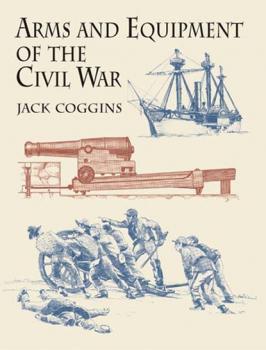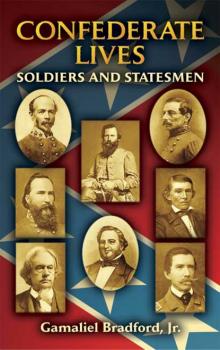Civil War
Скачать книги из серии Civil WarArms and Equipment of the Civil War
The first military conflict to use iron-clad gunboats, metallic cartridges, and submarines, the Civil War also introduced such inventions as the telegraph and military balloon, utilized by the Signal Corps. This comprehensive reference brings a fresh perspective to wartime victories and defeats, with vivid descriptions of how the war was fought and what material was available to armies and navies of the Union and the Confederacy. Profusely illustrated with hundreds of the author's own drawings, Jack Coggins's remarkable encyclopedia of military hardware and technology also describes such equipment as pontoon bridges, corduroy roads, «excelsior» percussion grenades, «freak guns,» siege artillery, mines, and submarine torpedoes. Offering a new view on how military resources decided the outcome not only of battles, but of the war as well, the text also includes on-the-scene comments by Union and Confederate soldiers about equipment and camp life in general. A must-have book for every Civil War enthusiast and for readers interested in the development of weaponry.
Confederate Lives
The distinguished historian Gamaliel Bradford, Jr.–author of Lee, the American and other acclaimed Civil War biographies–offers portraits of eight key leaders of the Confederacy. Bradford's skills at compiling concise profiles are at their finest in these compelling sketches of prominent figures in the Southern Cause.Commanding officers include Joseph E. Johnston, the highest-ranking U.S. Army officer to resign and join the Confederacy; the war's most famous cavalryman, J. E. B. Stuart; Lee's «Old War Horse,» James Longstreet, who served from Manassas to Appomattox; P. G. T. Beauregard, winner of the nearly bloodless victory at Fort Sumter; and Rear Admiral Raphael Semmes, so successful in battle that he was charged at the war's end with treason and piracy. Confederate statesmen include U.S. Senator Judah P. Benjamin, appointed by Jefferson Davis as Confederate attorney general, secretary of war, and secretary of state; Vice-President of the Confederate States, Alexander H. Stephens; and Senator Robert Toombs, who evolved from conservative Unionist to ardent secessionist.The book concludes with the «high water mark» of the Confederacy at Gettysburg and examines the effects of that momentous battle. Previously available only in expensive, hard-to-find editions, this volume is a rare find for Civil War buffs.
The Confederate Reader
"An excellent anthology, worthy of the imitations it will engender . . . it will go a long way toward illuminating Confederate history." — The New York TimesFor any student of the War Between the States, this treasury of contemporary documents—all but a few written by Southerners — offers a wealth of insight and perspectives on life in the South during the conflict, how newspapers and periodicals covered events, and how Southerners reacted to the disastrous struggle that disrupted their lives and ravaged their homes, farms, and cities. Selections have been arranged in an order that demonstrates the progress of the war, beginning with a South Carolina ordinance to secede from the Union and ending with a final message in 1865 from the last Confederate general to surrender. Relive the day-to-day reality of the War as captured in a rich legacy of written records: official battle reports, general orders, letters, sermons, songs, published articles, novels, and accounts of travel, prison, and conditions of army life. Included are contemporary newspaper accounts of the Battle of Fort Sumter, a stirring address to his soldiers by Jefferson Davis in 1864, a Confederate prisoner's account of life in a Yankee prison, a newspaper report of the sack and destruction of Columbia, South Carolina, a poignant last-ditch attempt by General E. Kirby Smith in 1865 to rally the Trans-Mississippi Army, and many more. A selection of authentic cartoons, sketches, and broadsides from various periods of the War adds a special «you-are-there» flavor to the book. Carefully chosen and annotated by a distinguished authority on the Confederacy, these selections paint a broad and moving picture of the attitudes, emotions, and ideas that motivated and sustained the South during the War. Assembled in this inexpensive paperback edition of The Confederate Reader, they will bring new insight and enlightenment to any Civil War buff or student of American history.


